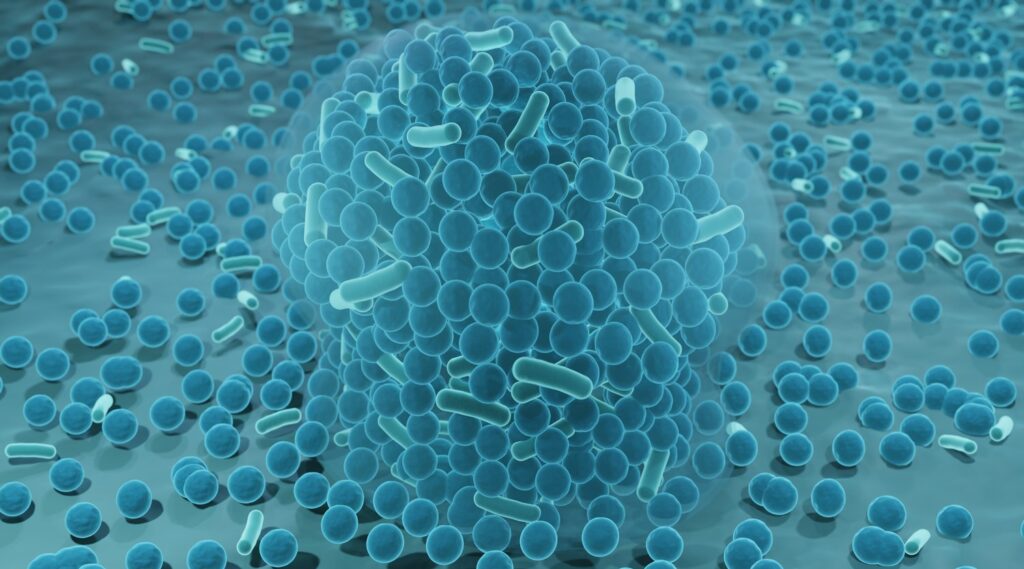The need for innovative antimicrobial agents has become increasingly urgent due to the rise of antibiotic-resistant pathogens and the persistent threat of infections acquired during hospital stays.
Traditional antibiotics and antiseptics are often ineffective against these resilient microorganisms, leading to severe health complications and increased healthcare costs. Therefore, researchers are exploring alternative solutions that can effectively target and eliminate these harmful pathogens. A promising development is the creation of an intelligent “nanokiller” derived from a component of cinnamon essential oil, which offers a novel approach to combating these microbial threats.
A team of researchers from the Universitat Politècnica de València (UPV) and the CIBER de Bioingeniería, Biomaterials y Nanomedicine (CIBER-BBN) has harnessed the antimicrobial properties of cinnamaldehyde, a key component of cinnamon essential oil, to develop this innovative nanodevice. Their findings, published in the journal Biomaterials Advances, demonstrate the significant potential of this nanokiller in addressing various pathogenic microorganisms.
The newly developed nanodevice has shown remarkable efficacy against several dangerous pathogens, including Escherichia coli, Staphylococcus aureus, and Candida albicans. These pathogens are responsible for a range of infections, from foodborne illnesses and wastewater contamination to serious nosocomial infections. The ability to effectively eliminate these pathogens could revolutionise infection control in various settings, including healthcare facilities, food processing, and environmental management.
Escherichia coli, while typically harmless, includes strains that can cause severe abdominal cramps, acute diarrhoea, and vomiting. Staphylococcus aureus can lead to skin infections, bloodstream infections, osteomyelitis, and pneumonia. Candida albicans, a common fungus, is notorious for causing diseases such as candidemia and invasive candidiasis. The versatility of the nanokiller in targeting these diverse microorganisms highlights its potential as a comprehensive antimicrobial agent.
The team from the IDM-CIBER NanoSens group has outlined the practical applications of this nanokiller. “For example, we could create a spray, make a formulation based on water and other compounds, and apply it directly. We could make a water-based formulation in the field and spray it directly, like any pesticide today. And in hospitals, it could be applied on bandages, and we could even try to make a capsule that could be taken orally,” explains Andrea Bernardos, a researcher in the NanoSens group at the Inter-University Institute for Molecular Recognition Research and Technological Development (IDM).
The nanodevice’s efficacy is significantly higher compared to free cinnamaldehyde. The encapsulated form is approximately 52 times more effective against Escherichia coli, 60 times more effective against Staphylococcus aureus, and 7 times more effective against Candida albicans. This improvement is attributed to the reduced volatility of cinnamaldehyde when encapsulated in a porous silica matrix and the increased local concentration of the compound when released in the presence of microorganisms.
“The increase in the antimicrobial activity of the essential oil component is possible thanks to the decrease in its volatility due to its encapsulation in a porous silica matrix and the increase in its local concentration when released due to the presence of the microorganisms,” says Bernardos.
One of the most notable advantages of this nanokiller is its high antimicrobial activity at very low doses. The nanodevice enhances the properties of free cinnamaldehyde, reducing the biocidal dose by approximately 98% for bacterial strains (Escherichia coli and Staphylococcus aureus) and 72% for the yeast strain (Candida albicans).
“Moreover, this type of device containing natural biocides (such as essential oil components) whose release is controlled by the presence of pathogens could also be applied in fields such as biomedicine, food technology, agriculture, and many others,” concludes Ángela Morellá-Aucejo, also an IDM researcher at the Universitat Politècnica de València.
The development of this intelligent nanokiller represents a significant step forward in the fight against antibiotic-resistant pathogens and nosocomial infections. Its potential applications across various industries underscore the importance of continued research and innovation in antimicrobial technologies. By leveraging the natural properties of essential oils and advanced nanotechnology, this new approach could pave the way for more effective and sustainable antimicrobial strategies.
Author:
Kate Sivess-Symes
Content Producer and Writer
Nano Magazine | The Breakthrough


